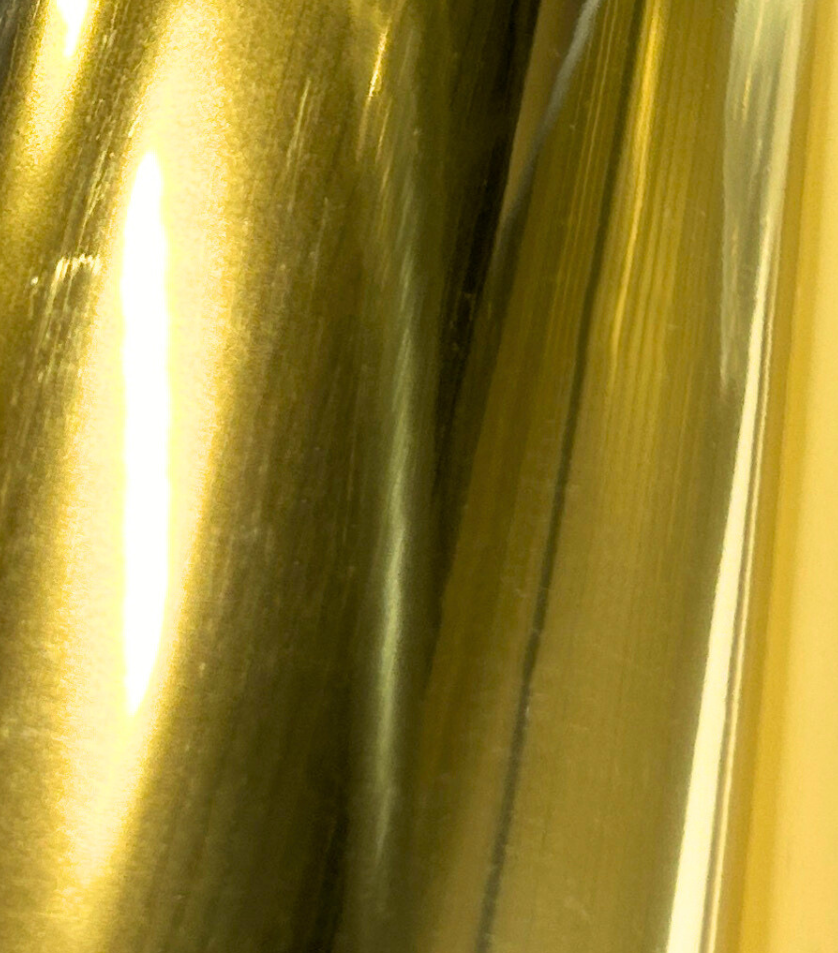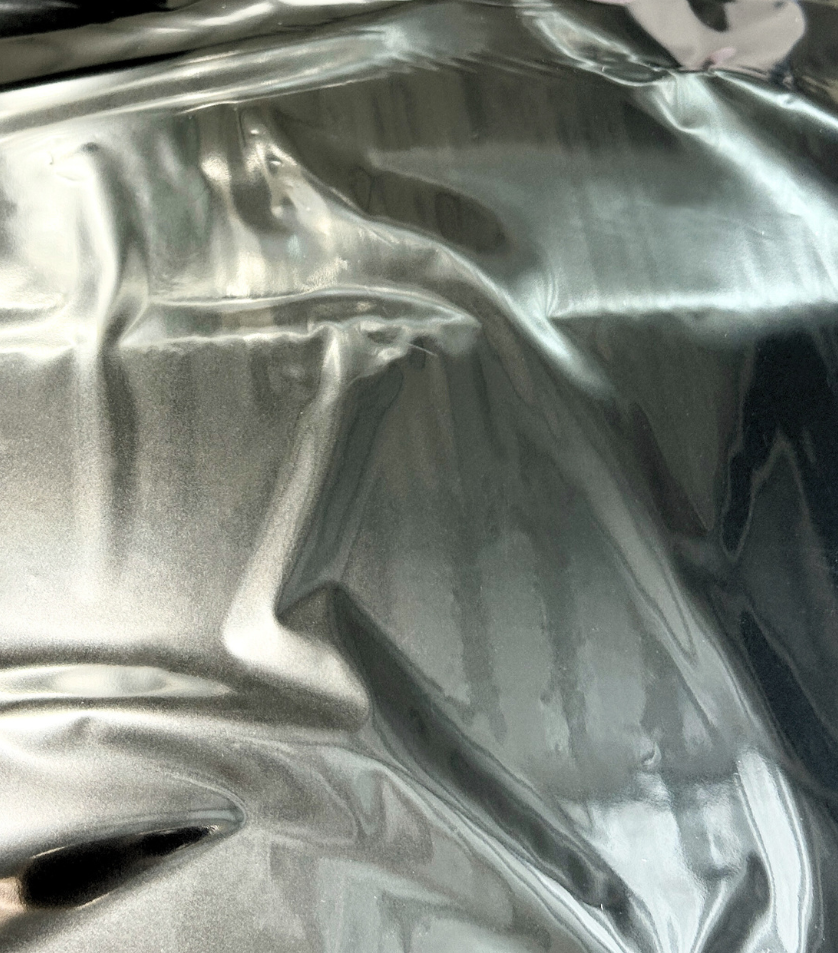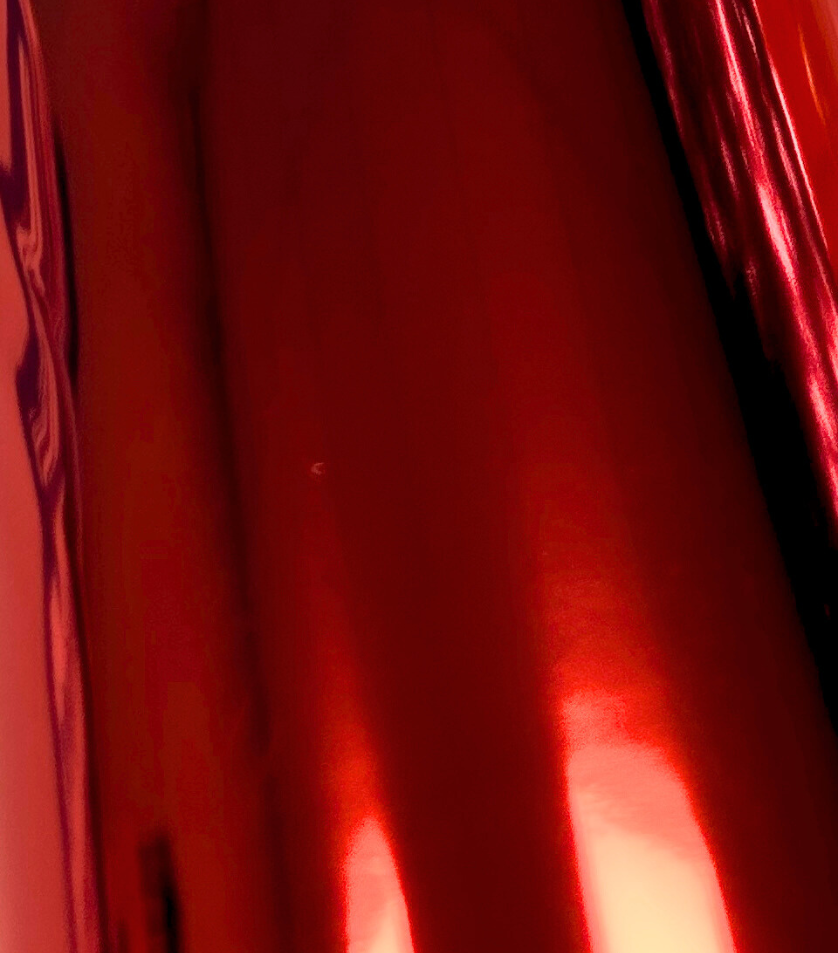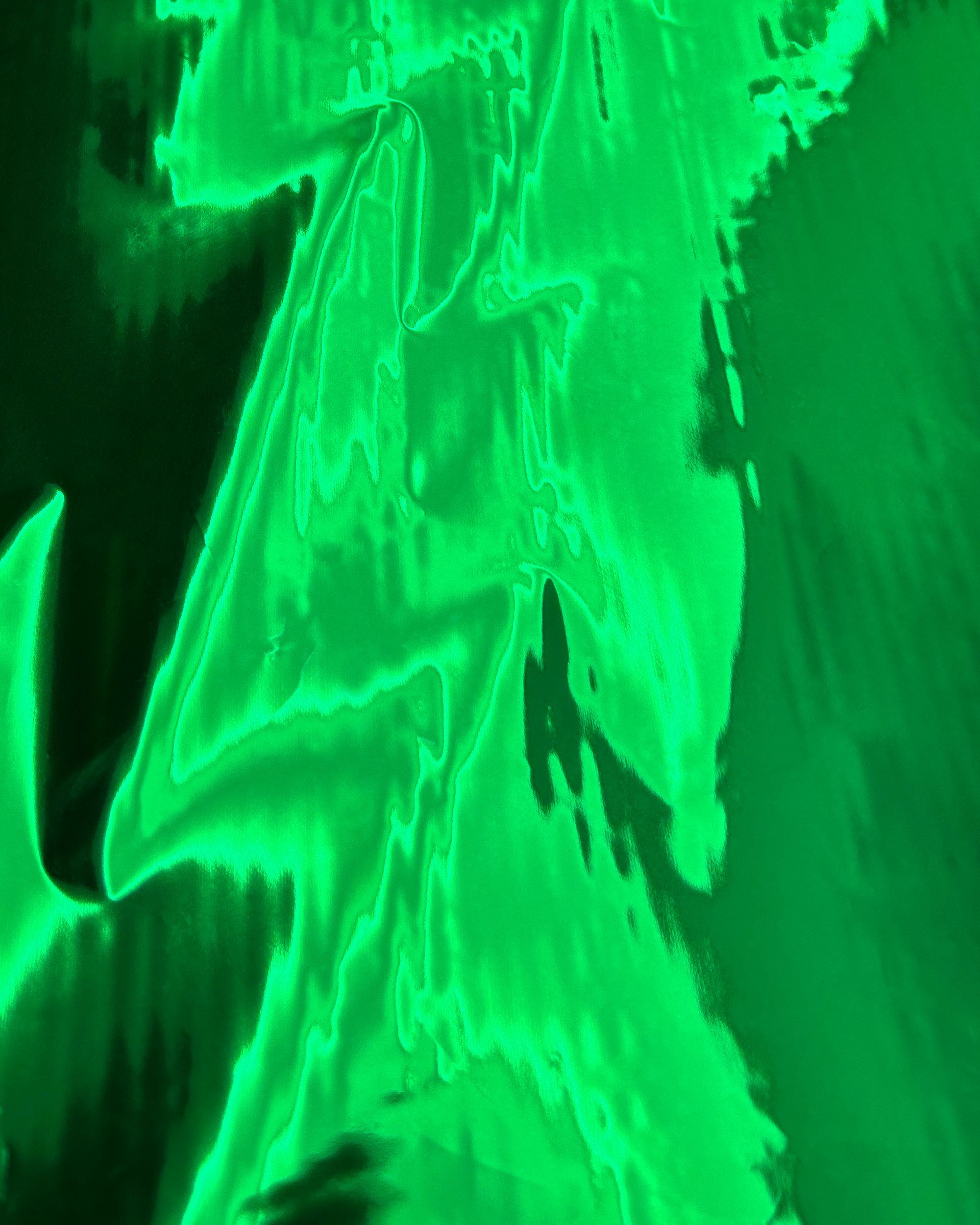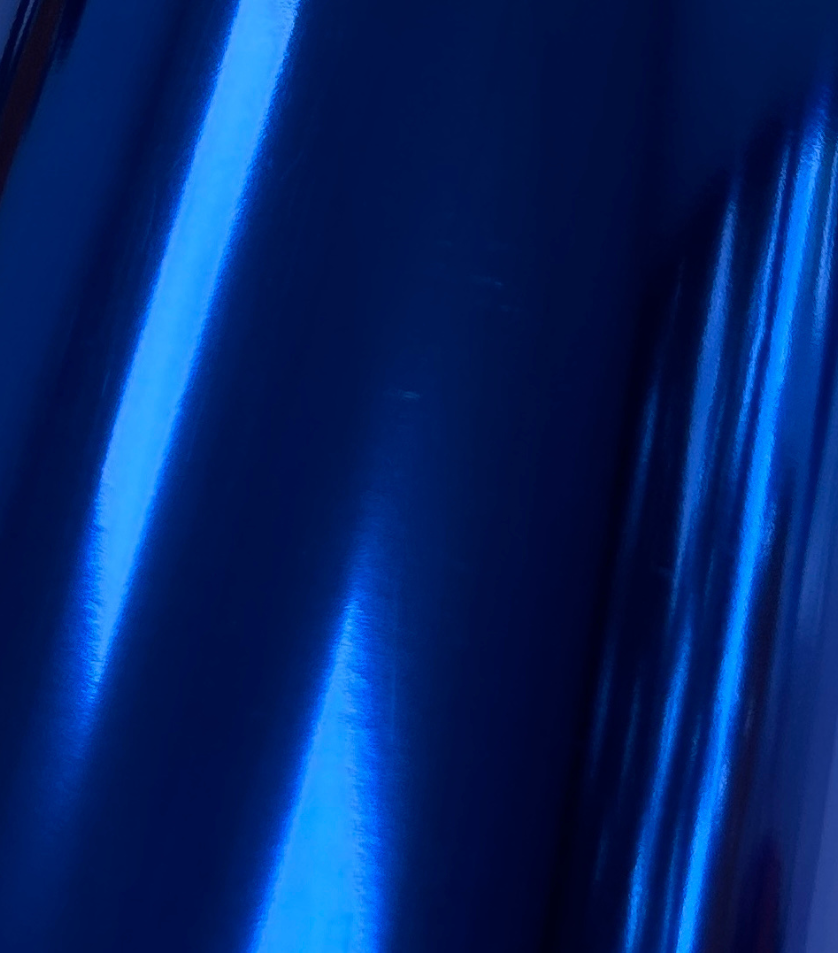For a luxurious and high-end appearance
Introduction
In the past, gilding was used to embellish the leather covers of antique books. Today, hot foil stamping has become an essential marketing tool.
This embellishment technique offers real added value to communication materials by giving them a luxurious, high-end appearance. Carefully applied to specific areas of a printed material, hot foil stamping highlights important elements by adding depth, shine, and brilliance.
Attract the eye
What is hot foil stamping?
Digital hot foil stamping is a digital finishing technique. It involves applying a gold, silver, or colored metallic film to carefully defined areas of a printed product, without the need for a plate or cliché. This process combines precision and speed and offers remarkable freedom of customization. Ideal for enhancing business cards, invitations, and packaging, for example, hot foil stamping attracts attention and gives your brand a high-end image.
How does it work?
Once the substrate has been printed by our digital press, it is placed in our AccurioShine 3600 machine. First, a selective varnish is applied to the areas to be gilded to act as an adhesive. Then, a metallized film is applied to the previously varnished substrate. This film adheres only to the varnished elements, while the rest of the film is removed. This film is identical to that of traditional hot stamping but does not require the manufacture of a marking tool.
Our expertise in the service of accessibility
A valuable tool to help you stand out
In an ultra-competitive environment where every detail counts, hot stamping is a real lever for differentiation.
By adding a touch of refinement and elegance to your materials, gilding enhances your brand image and instantly captures attention. Its shine catches the eye, while its subtle texture invites touch. Combining emotion and aesthetics, gilding transforms your prints into true sensory experiences.
A business card, packaging or invitation enhanced with hot foil stamping naturally stands out, increasing your brand's chances of being noticed, remembered and preferred over the competition.
Hot foil stamping, when to use it?
A high-end look
Multiple applications
Highly valued by both professionals and consumers, hot foil stamping isn't limited to business cards. Much more versatile, it can be used in a wide variety of applications. Used sparingly and with finesse, it gives any medium a high-end look and unlimited creativity.
- Covers, magazines, brochures, leaflets
- Flyers and brochures
- Business cards, loyalty cards, greeting cards
- Invitation cards, thank you cards, announcements
- Packaging, cardboard cases, bell boxes, boxes
- Postal mailing, mail routing, postcards
- Custom Card Games
- Restaurant menus, bottle packaging
Reduce costs and time
Faster, more accurate and less expensive
Traditional hot foil stamping is an ancient finishing technique used long before the advent of digital printing. This traditional process requires the creation of an engraved metal plate (cliché or stamp) which, under pressure and heat, transfers a metallic film onto the paper.
Although it offers high-quality results, this technique isn't the most economical... nor the fastest. While traditional hot foil stamping requires the manufacture of stamping tools, digital hot foil printing only requires a vectorized PDF file.
Rather than using metal plates, digital hot foil printing machines apply the varnish using inkjet technology and then adhere the foil to the varnish. This approach significantly reduces production costs and lead times for small quantities.
Enhance the details
Extreme customization
The benefits of digital hot foil stamping don't stop there! This digital technology ensures highly precise application, ideal for enhancing finer details and more intricate designs.
Thanks to digital technology, personalization reaches a whole new level, offering endless possibilities for creating unique materials. Whether on the front, back, logo, watermark, text, or any other element, digital foiling offers exceptional creative freedom, directly from your file.
While gilding can enhance your creations, be careful not to overdo it. A file saturated with gilding can quickly become kitschy. We recommend using it sparingly to maintain the desired finesse and simplicity.
7 colors for 7 times more creativity
While gold and silver remain the most commonly used gildings, the range of colors doesn't stop there. For your more daring creations, dare to be original with red, blue, green, holographic, or holographic dot colors.
For more freedom of expression, hot stamping can be combined with a textured 3D varnish undercoat. Wood grain, leather feel... give a whole new dimension to your hot stamping.
And after?
Deinking and recycling
At Print Europe, we carefully select our raw materials in order to respect our environmental commitments.
Our varnishes and gilding meet the most demanding ecological standards and are recyclable and deinkable according to the Ingede 11 standard.
In addition, hot foil stamping waste is collected by MGI, then recycled through a de-inking and grinding process before being resold to plastics manufacturers as raw material.
Two different techniques
Hot foil stamping and metallic ink, what are the differences?
Although both intended to add shine to your prints, these two techniques differ in both their application and their rendering.
Hot foil stamping involves applying a gold film glued to a selective varnish base, giving your prints a premium, high-end effect. Conversely, metallic ink is a digital ink enriched with metallic pigments, applied like a traditional ink for an iridescent, metallic effect. Metallic ink is more economical, but offers a less shiny and vibrant result than hot foil stamping.
Technical constraints
Hot foil stamping can be applied to coated or uncoated paper.
However, for optimal adhesion of the selective varnish, we recommend adding a Soft Touch Matte lamination. If your file includes gilding on a cutting line or a fold, your support will necessarily be laminated.
Your file must not exceed 330 x 750 mm and a thickness of 0.45 mm. Beyond this, your print job will not be able to be processed by our machine.
Need help?
Creating your file: For our machine to recognize your file, varnish and gilding must be included as the 5th color. To create your print file in accordance with our technical constraints, please refer to our DTP guide.
Technical assistance: Upon specific request and depending on the nature of your file, our team of graphic designers can prepare your file for gilding.




